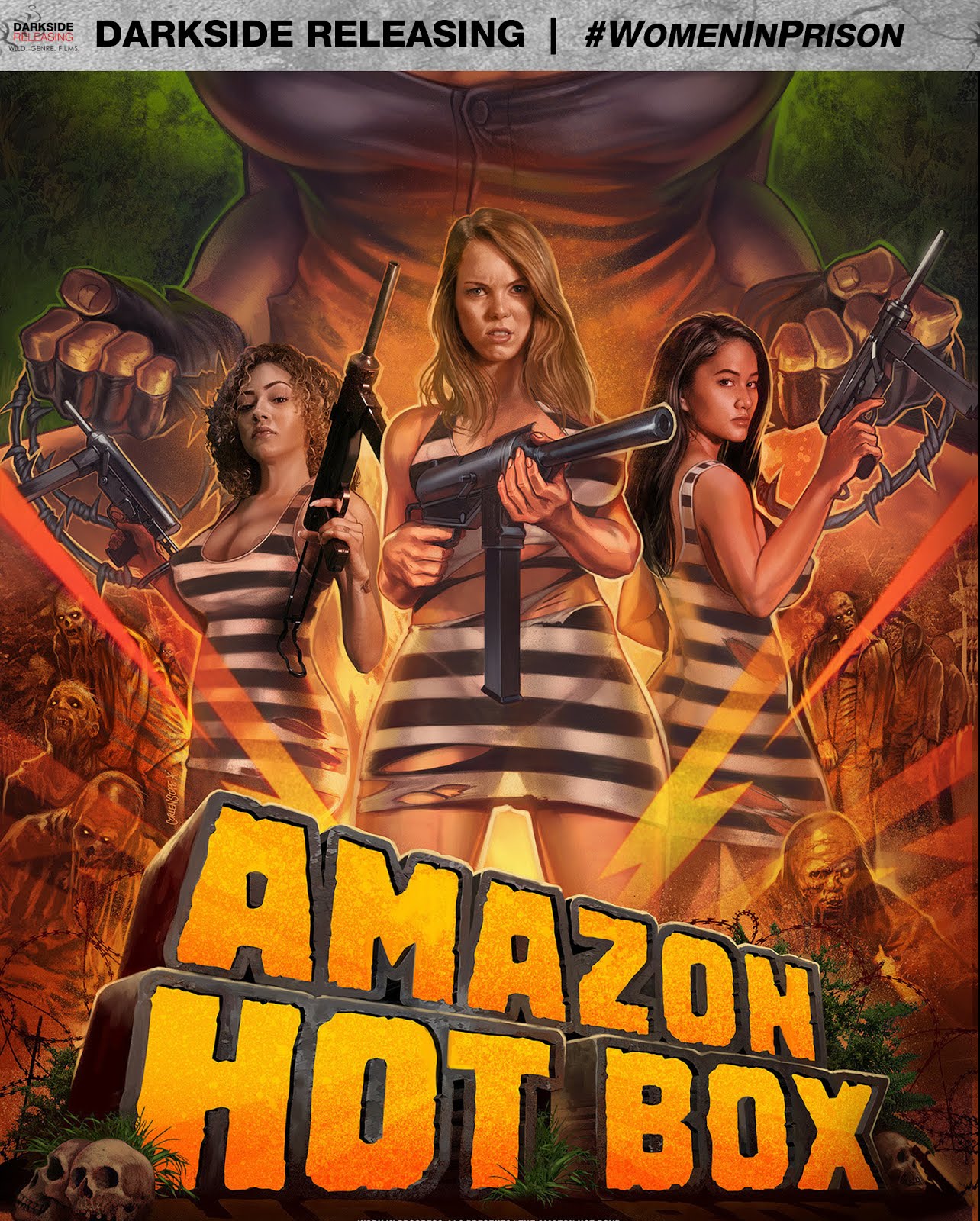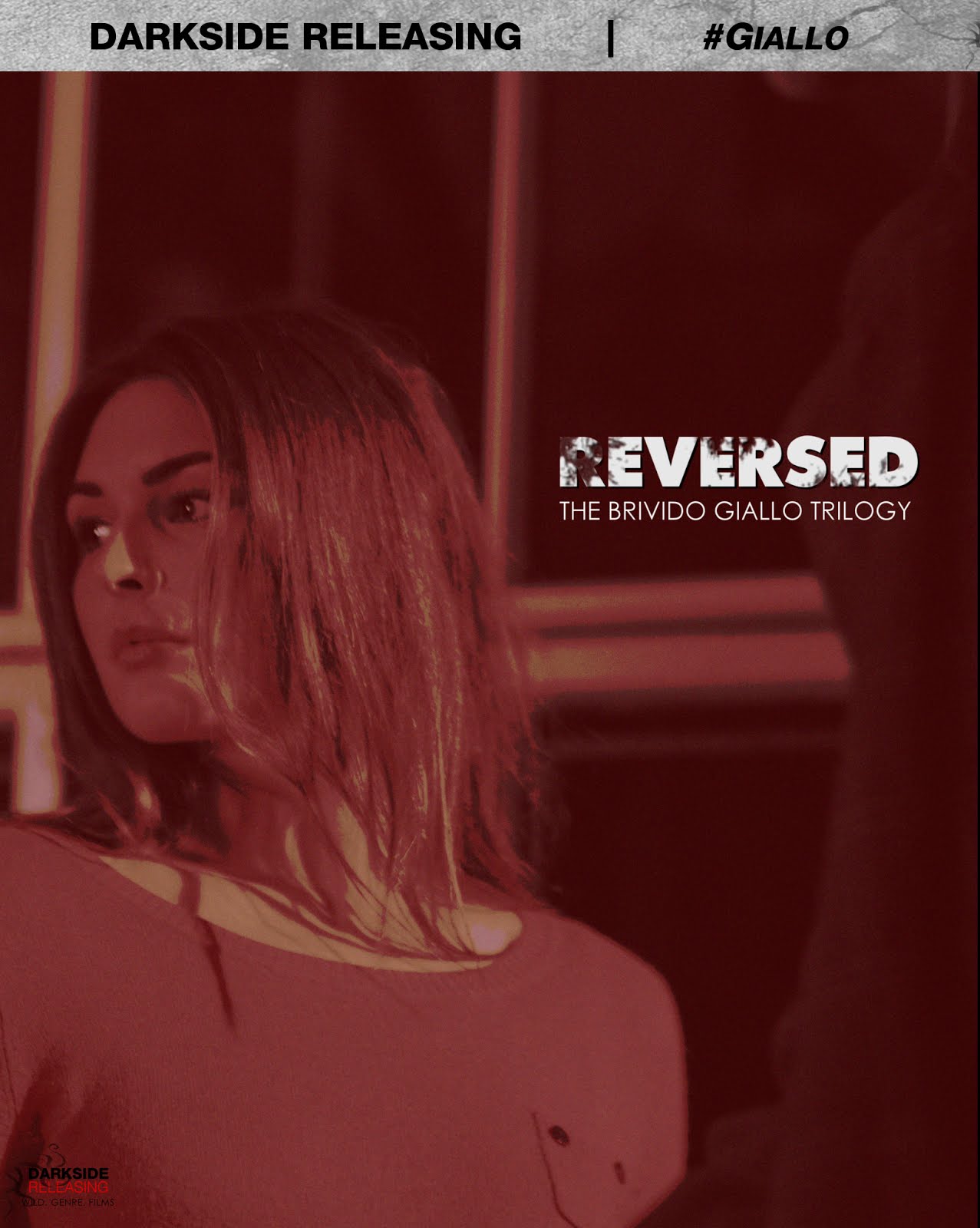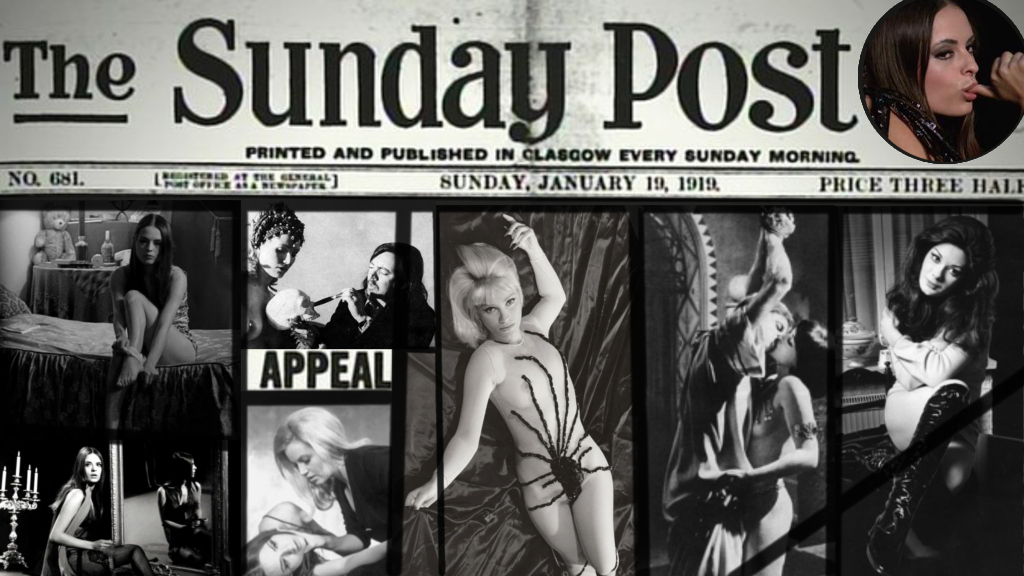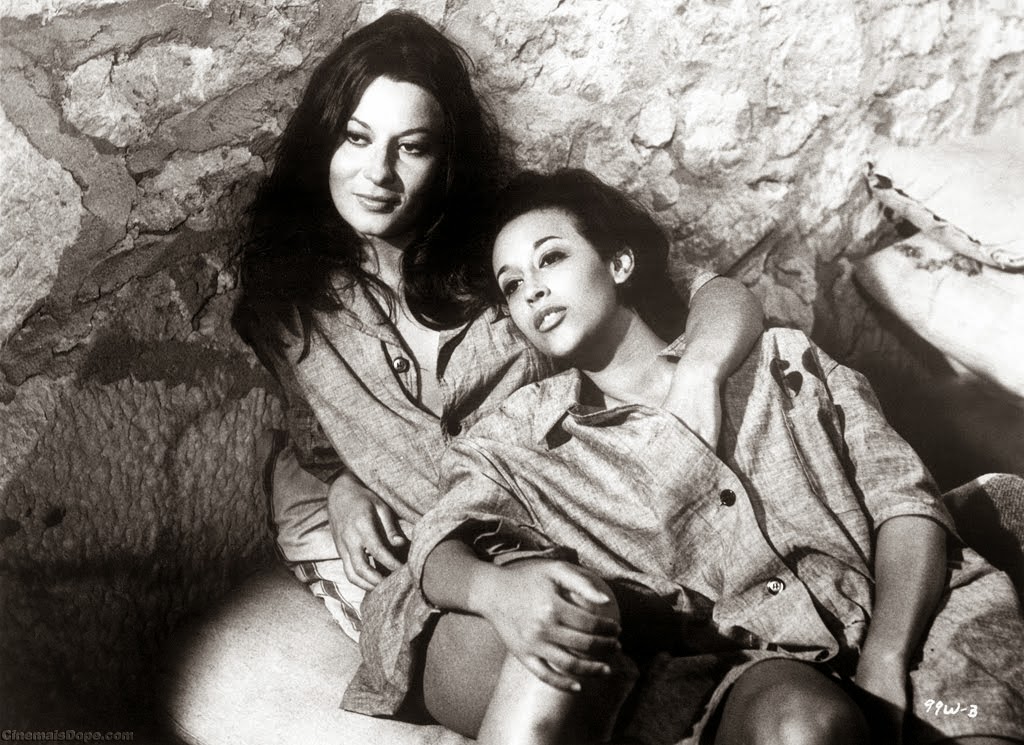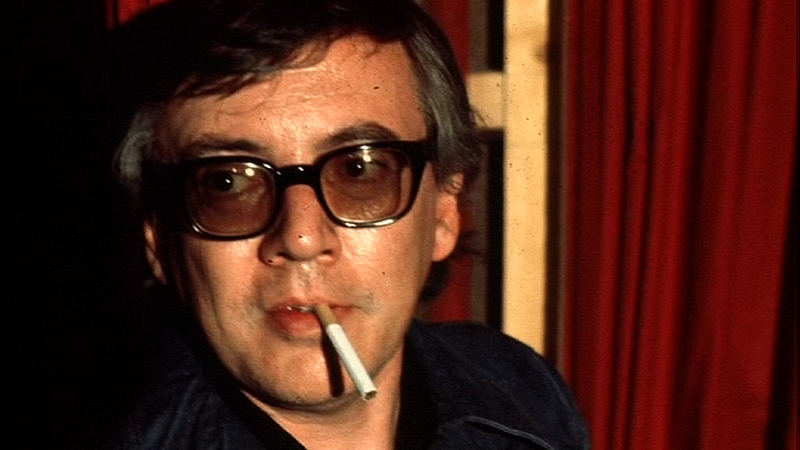Sometime
circa 2016, I'd heard that the top spot in the American Film
Institute's top-100-movies list had been suddenly replaced by Alfred
Hitchcock's 1958 masterpiece Vertigo. Later that same year (2016,
not 1958) my wife and I attended a dynamic night at The Orpheum
featuring Vancouver's Symphony Orchestra – or rather, the
orchestra's entire strings section – performing live Bernard
Hermann's soundtrack to the classic horror film Psycho, while
Hitchock's film played on a huge screen suspended over the
orchestra's stage. It was an amazing October night. So thrilled from
the experience, when my wife and I returned home, we immediately went
online to order a 13-film Blu-ray box set of Hitchock's films.
Later,
in 2017 (April 23rd, 2017, to be exact), on what was a rainy
afternoon (or, a torrentially downpouring afternoon, to be more
accurate), I decided out-of-the-blue to put on the Vertigo Blu-ray
from that set. After having watched and re-watched the films of Brian
DePalma and Dario Argento for over twenty-five years, both of them
absolute favourite film directors of mine, this would be the first
time I'd have ever watched Hitchcock's Vertigo...
* * *
I was
sixteen years old in 1991 when my mother came home from grocery
shopping, carrying two rental VHS videotapes she'd picked up from
Super Video on her way back for me. My best friend at that time,
Kirk, was hanging out with me that Saturday evening in the downstairs
living room when my mom brought the tapes in – Roman Polanski's
Frantic, and Brian DePalma's Blow Out. The first film starred
Harrison Ford, whom we both knew better as Indiana Jones at that
time, and the second film, Blow Out, was about a b-movie
sound-effects designer who, while out one night recordings sounds for
his catalogue of studio sound-tapes, accidentally records the tire
blow-out and subsequent car crash that kills a prominent senator.
DePalma's film starred – “John Travolta?” I asked my mother
with a severe you've-gotta-be-kidding-me look plastered across my
face. Firstly, we hadn't requested these videotapes, my mom was just
trying to be nice and bring us a little something she'd though we'd
like. Okay, Harrison Ford I could understand, but in 1991 we knew
John Travolta as the guy who was starring in those Look Who's Talking
movies – in 1991, John Travolta was not a cool movie star. “You'll
like it,” my mother insisted. “It's good.”
“Fine,”
I said. “Thank you.” “Thanks, mom!” Kirk yelled from the
couch. I rolled my eyes. We watched the Harrison Ford movie first.
* * *
I was
now forty-two as I was experiencing, for the first time, Hitchcock's
Vertigo. Also, Vertigo did not take the top spot on the AFI's top-100
list – what had actually happened was that the AFI had created a
series of new top-10 lists that were categorized by genre. Hitchock's
movie had thusly ended up in the number 1 spot on the top-10
mysteries list. Okay, misunderstanding solved. I placed the Blu-ray
disc into the player and sat down. As the disc spun to life in the
player, I could hear the rain smashing down outside the apartment's
sliding glass door. It was hitting the porch and the ground below
with such force I'd thought it had started hailing. And then the film
started...
The
opening visuals grabbed my attention immediately as the beginning
credits played over the closeup of a woman's face, and the camera
moves so that it becomes as single close-up of her left eye. Things
begin to spin inside the iris. Before I can see that this opening
sequence had been designed by Saul Bass, who had also designed the
opening credits for Psycho, I heard the opening music that
immediately brought my mind to a film I was far more familiar with,
although it had been made fifteen years after the film I was
currently experiencing – Brian DePalma's Sisters...
After
obsessing over Brian DePalma's and Dario Argento's movies for nearly
twenty-six years, I was honestly, if not understandably, stunned at
how much these filmmakers, and specifically Brian DePalma, had used
and re-used and re-cycled from this one single film. I was even more
stunned that I had never seen Hitchcock's influential film before.
* * *
My mom
had been right – both my friend Kirk and I came away loving
DePalma's Blow-Out. Kirk had
been enthralled with the story having been told through the idea of
sound and movie sound-effects – he was (and still is) an
experimental musician who loved sound more than he loved music –
and in 1991, our Junior year in high school, both of us loved music.
Not only were we obsessed with the music of the day as well as
classic rock albums of the 60sand 70s, but both of us played several
instruments in the high school bands and extracurricular jazz
sections, as well as singing in several jazz and a capella
groups, and (of course) our own garage band, with Kirk on lead guitar
and myself on bass guitar, taking turns singing lead on the single
microphone we had (it was Kirk's) and with our other best friend
Marty pounding on the drums. Actually, Marty was a very good drummer,
he had a natural gift for timekeeping. And strangely, he look a lot
like Lars Ulrich from Metallica. I always secretly though that this
was why girls were interested in him, as he wasn't particularly good
looking otherwise. Anyway, Blow Out became an instant favourite of
mine and has remained in my mental top-ten list since that time.
Becoming more obsessed with the cinematic aspects and the ironic
storytelling of DePalma's film, rather than the more specific
background-sound aspects of it as Kirk had connected with, I later
approached my mother to ask if she'd known of any other films DePalma
had done. She then told me about one that she had seen in the cinema
in 1980... DePalma's Dressed to Kill.
Needless
to say, the following weekend I found myself at Super Video renting a
VHS tape of Dressed to Kill. Excited to watch it, I told my mom that
I'd picked it up for myself and was about to immerse myself once
again into DePalma's world. At this point in my life, still four
years away from my twenties, I was still a couple of years away from
discovering the films of Alfred Hitchcock, and specifically, Psycho.
* * *
One of
the most beautifully experimental things about DePalma's and
Argento's films are the long sequences that move the action and plot
forward with subtle music and underlying sound, intricate cutting,
and a complete absence of dialogue. These wordless, visually lush
sequences are so engaging that for me, it took several viewings
before I even realized that there were lengthy segments of these
directors' films that were telling the story without relying on any
dialogue. The imagery was telling the story, and that imagery, as in
the film Blow Out, was so engaging because it provided to us (and
allowed us, the audience, to see), a character working, thinking,
being inspired, and cleverly solving tricky problems, as John
Travolta's character was doing, in the quietness of his own
montage-scene, when he was snipping a series of photographs of the
car accident from a news magazine that a photographer had happened to
shoot with a new high-speed camera. We watch while Travolta puts each
rectangular cut-out photo under the lens of an animation camera and
re-shoots these magazine photos into a short piece of animated film,
and then sets this film to the soundtrack that he himself recorded.
There is no other characters in this scene to bounce dialogue off of,
to tell us what he's up to, only DePalma's visuals are telling us the
story. There is no narration, that would only ruin the graceful
cutting of imagery that DePalma and his editor have pieced together
for us, letting us see the pieces of the puzzle while John Travolta
is trying to solve his own narrative puzzle within the film we're
watching. Explanation is far from elusive, as the imagery says it all
and with DePalma's perfect timing of a symphony conductor.
DePalma
more noticeably had used this wordlessly visual storytelling
technique in the museum sequence in his film Dressed to Kill, where
Angie Dickinson and a handsome sunglassed stranger are playing an
elaborate game of sexual flirtation with each other. The sequence is
shot with long stedicam shots and elegantly punctuated with
split-screens and flashbacks that are used with a sense of fluidity
and never over-used; never detracting from the scene itself, only
adding to it, fleshing it out, creating a depth beyond the scope of
the stedicam.
I was
very surprised to see this visual and wordless technique applied to
early scenes in Hitchcock's Vertigo, as we become pulled into the
film by its visuals and score-only soundtrack while James Stewart
follows the object of his obsession and desire: the lovely Kim Novak.
We become wrapped up in the dance these characters are performing for
us in the scenes on the screen, Kim Novak leading while James Stewart
follows through one set-piece to the next, including a graveyard that
has been lit to inspire the future films of Dario Argento
specifically, slashed with greens and underlying reds, hankering back
to the colours of the opening-credit sequence of Vertigo. And like
Blow Out and Dressed to Kill, we become not only engaged by this
style of visual storytelling, but the style allows us to quietly
ponder and experience our lead characters' actions and decisions, to
become involved in the things that they are doing that are
mysteriously and gracefully moving the plot forward.
Traditionally,
my experience with Hitchcock's films up until this point had been of
his wordy, sometimes over-expositional dialogued approach to his
cinematic thrillers; and rightfully so, as was the style of the time
to have the attractive leads and protagonists/antagonists duelling in
a battle of wits over love and murder. Where Hitchcock began
experimenting photographically with his thrillers in his celebrated
Rope, which was entirely comprised of eight single long takes of
films, he culminated this technique into the beautiful flowing
camerawork that graces Vertigo and Psycho – although the techniques
would influence heavily Dario Argento and become perfected by DePalma
in his three masterworks: Dressed to Kill, Blow Out, and Body Double,
to which this trio of films was preceded by the nearly as important
early work in Sisters.
The
influence of Vertigo on Sisters (1973) is not quite as explicit, but
there are scenes leading into the third act of Vertigo that appear
deceivingly mundane on their own, should one not perceive the deft
photographic handling of framing, depth, and the space between the
action taking place, in this instance, on opposite side of the
street. Where James Stewart recognizes Kim Novak in the street in
front of a shop, Hitchcock's film cuts to an exhilarating medium
close-up of Novak before we see her running across the street and up
into a hotel halfway down the block. The camera shot follows, but the
camera itself does not. Nor does our victim/protagonist Stewart –
he hangs back and simply watches, and waits until he can see her
through the window of her hotel room, a few floor up above street
level. While there were voyeuristic scenes in both Sisters and Body
Double whose influences in spacing and mis-en-scene have been
attributed to Hitchcock's Rear Window, after seeing this seen in
Vertigo I would say that the influence lay far more cemented in the
latter film. The spacing from street level to the apartment window in
DePalma's Sisters when news reporter Jennifer Salt sees what she
thinks in a murder in the upper apartment across the street, the
context and content would understandably make any audience member
think back to Rear Window, when in fact compared to the decidedly
un-bloody voyeur-from-across-the-street scene between Stewart an
Novak in Vertigo, it's that film that fits into DePalma's template
for the crucial scene in Sisters more firmly.
(To
be continued...)


























